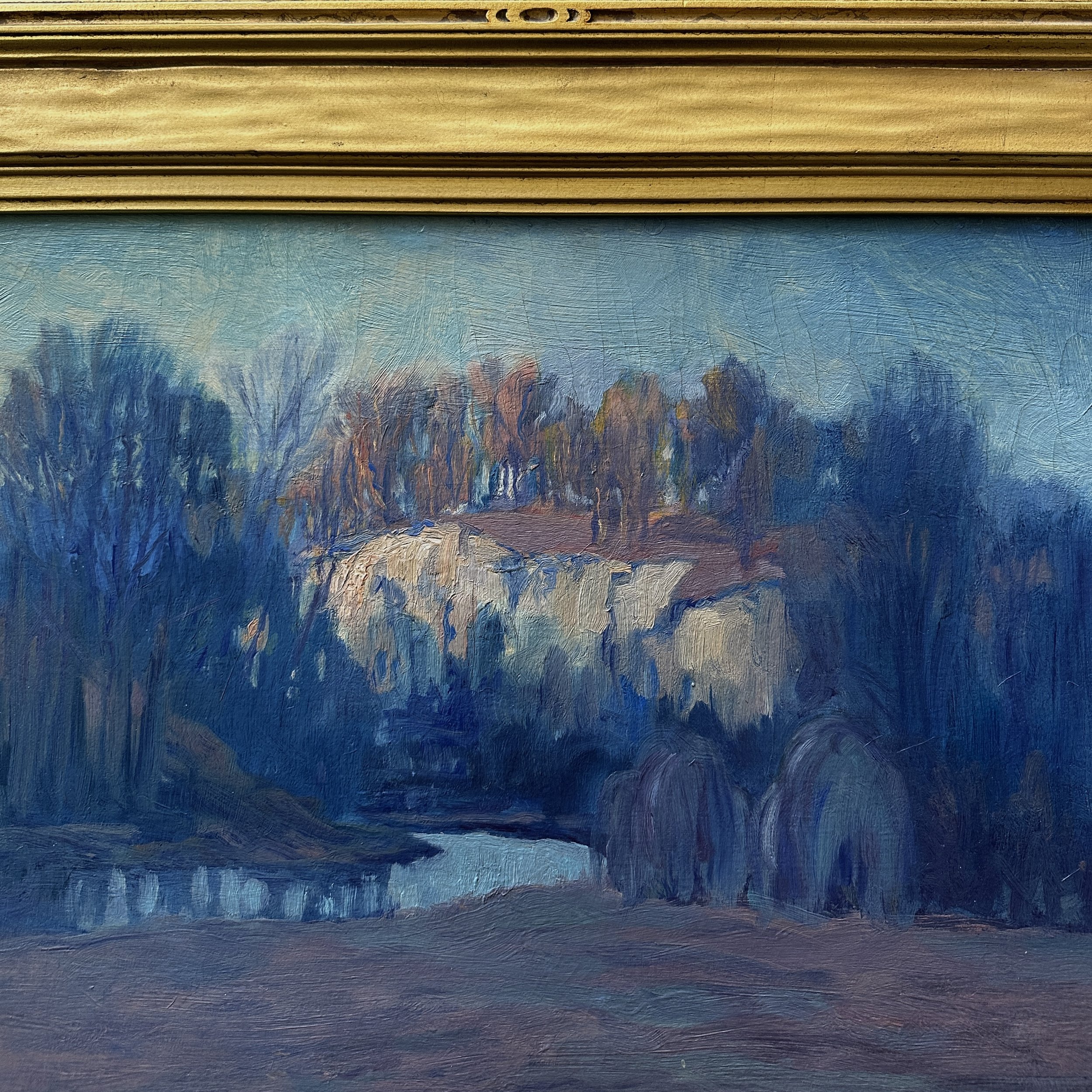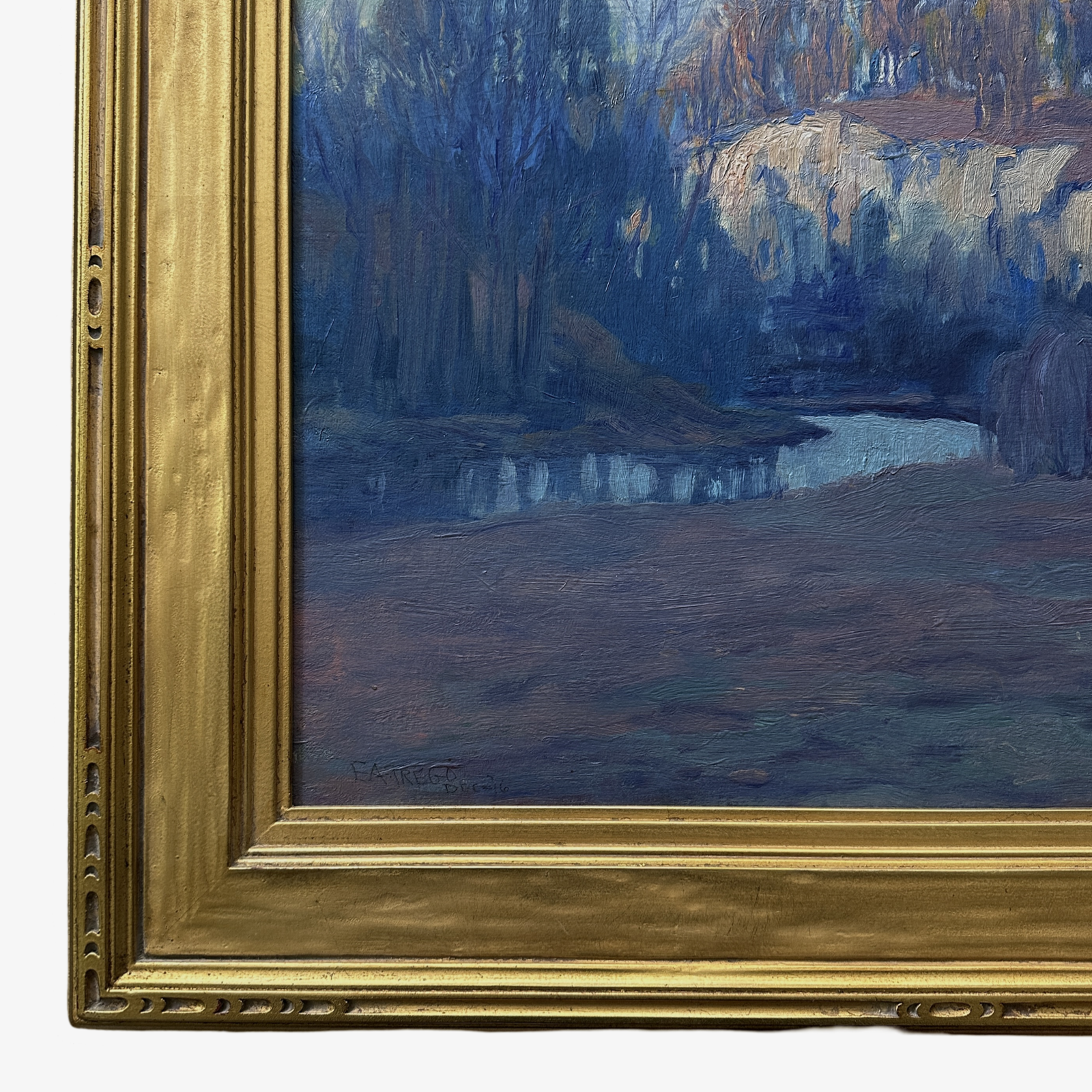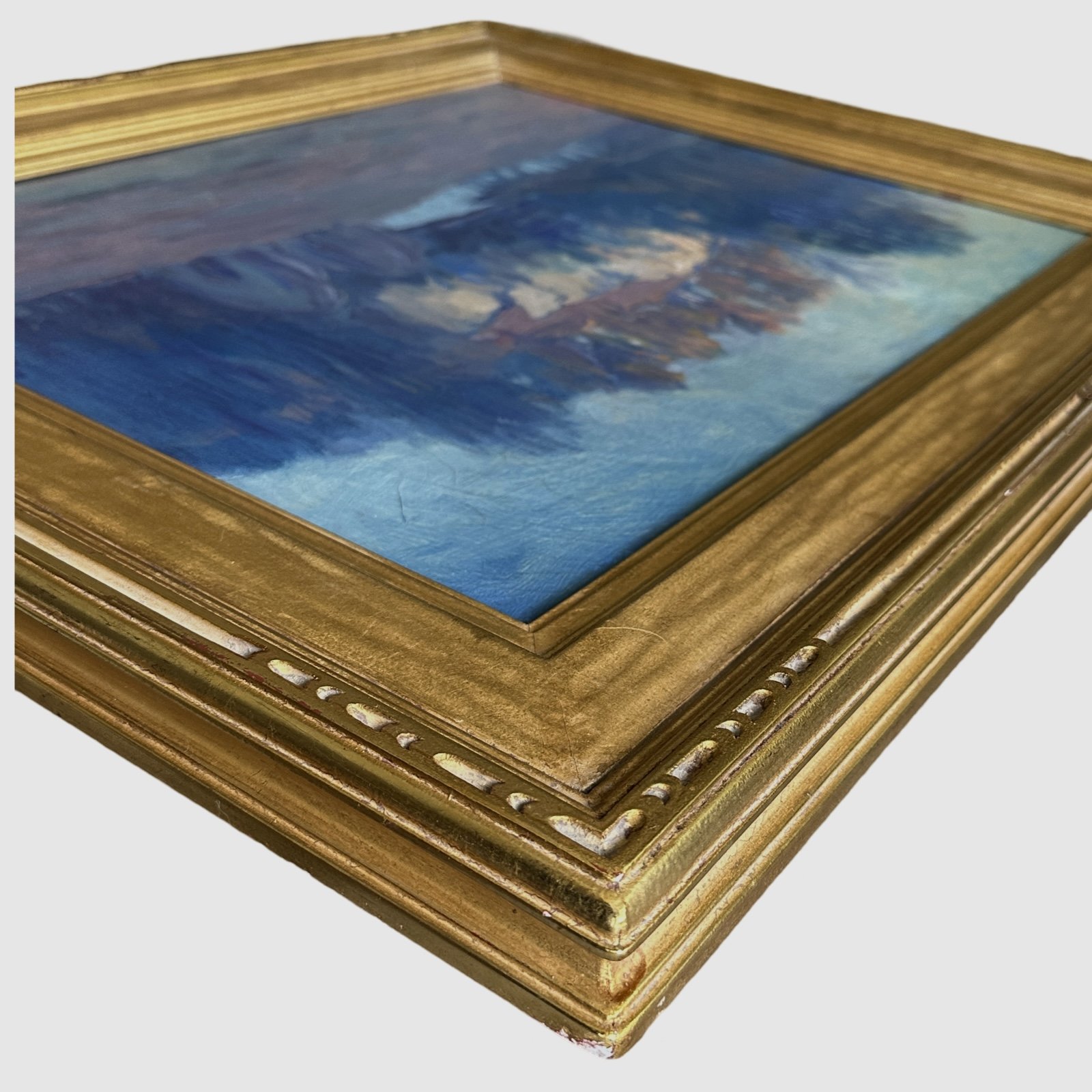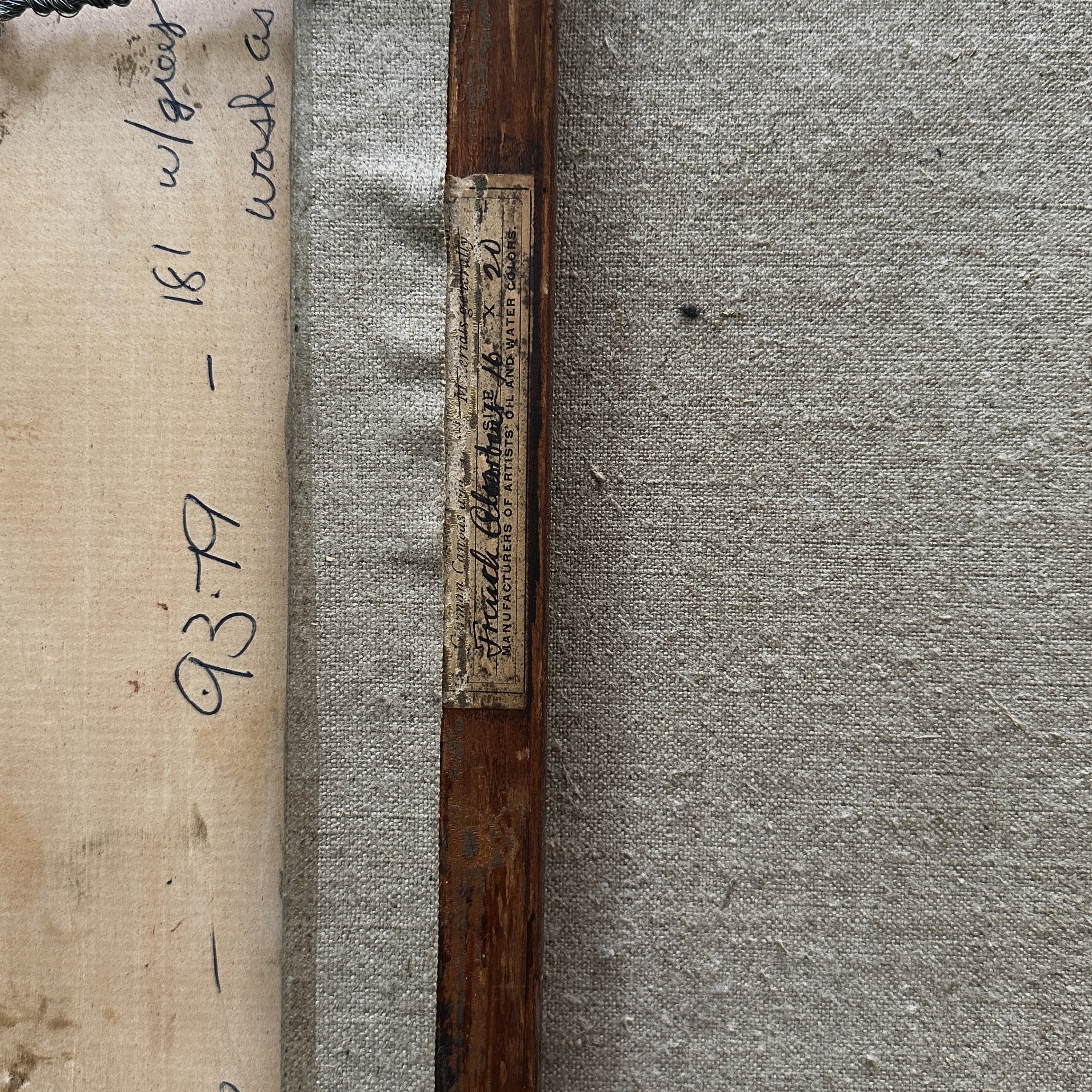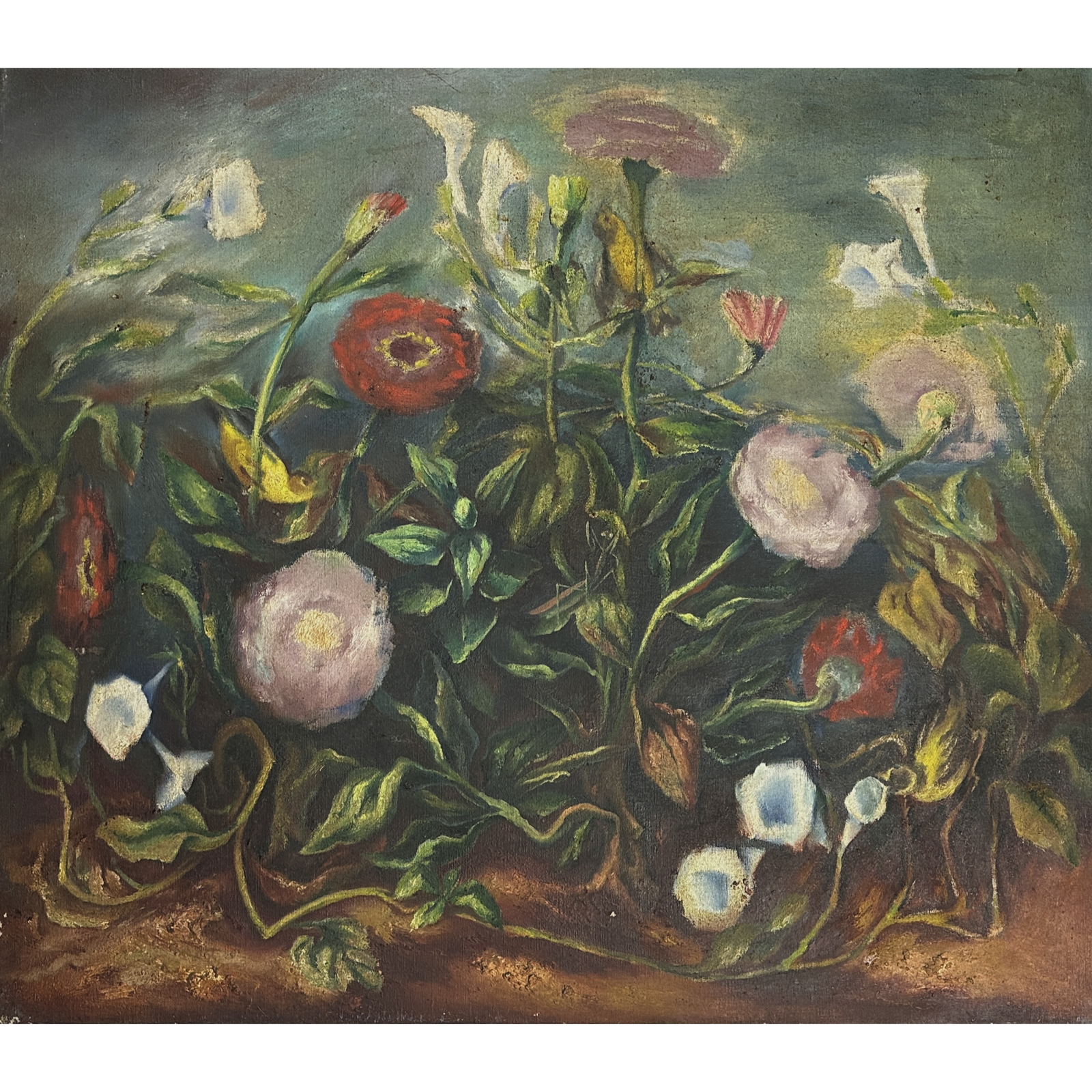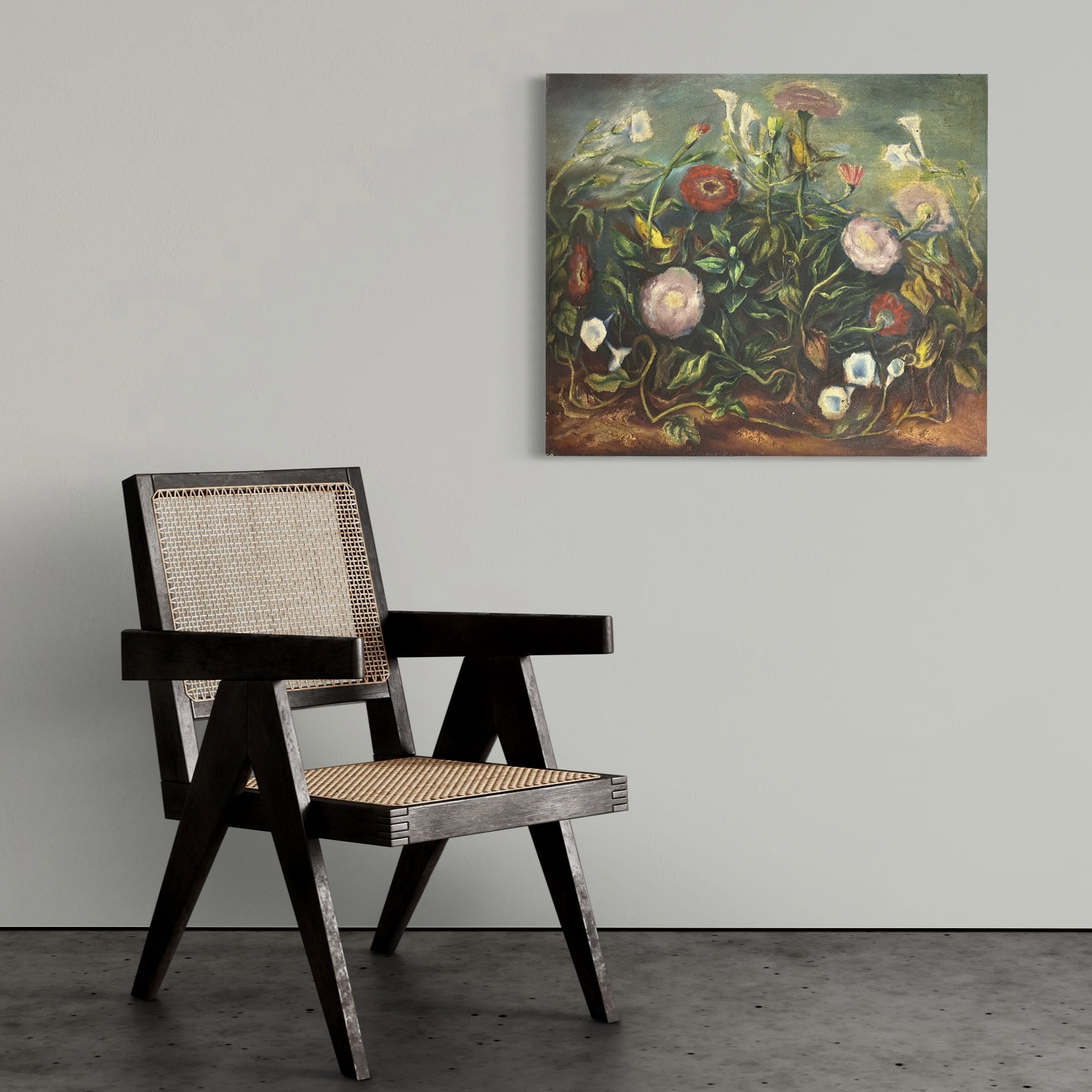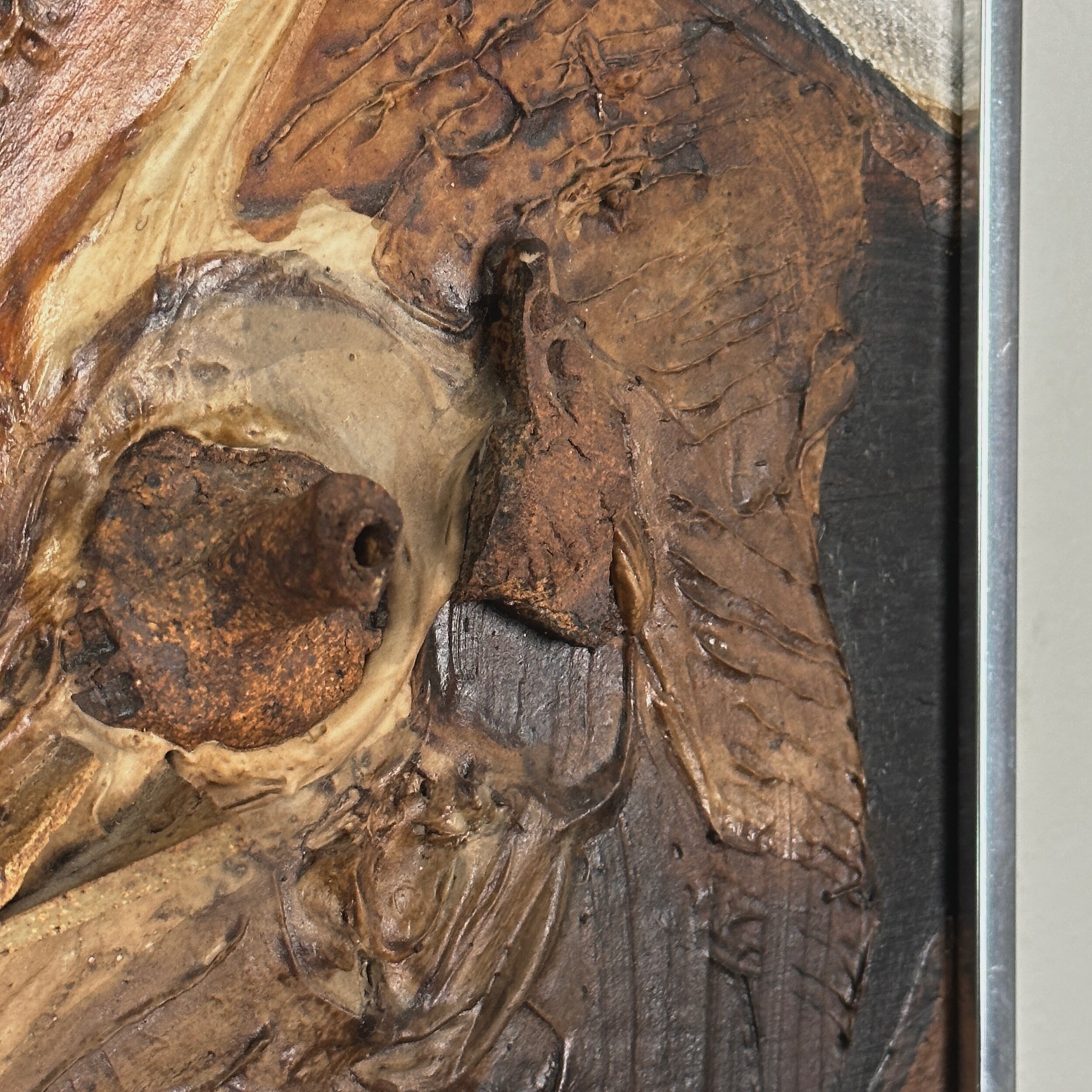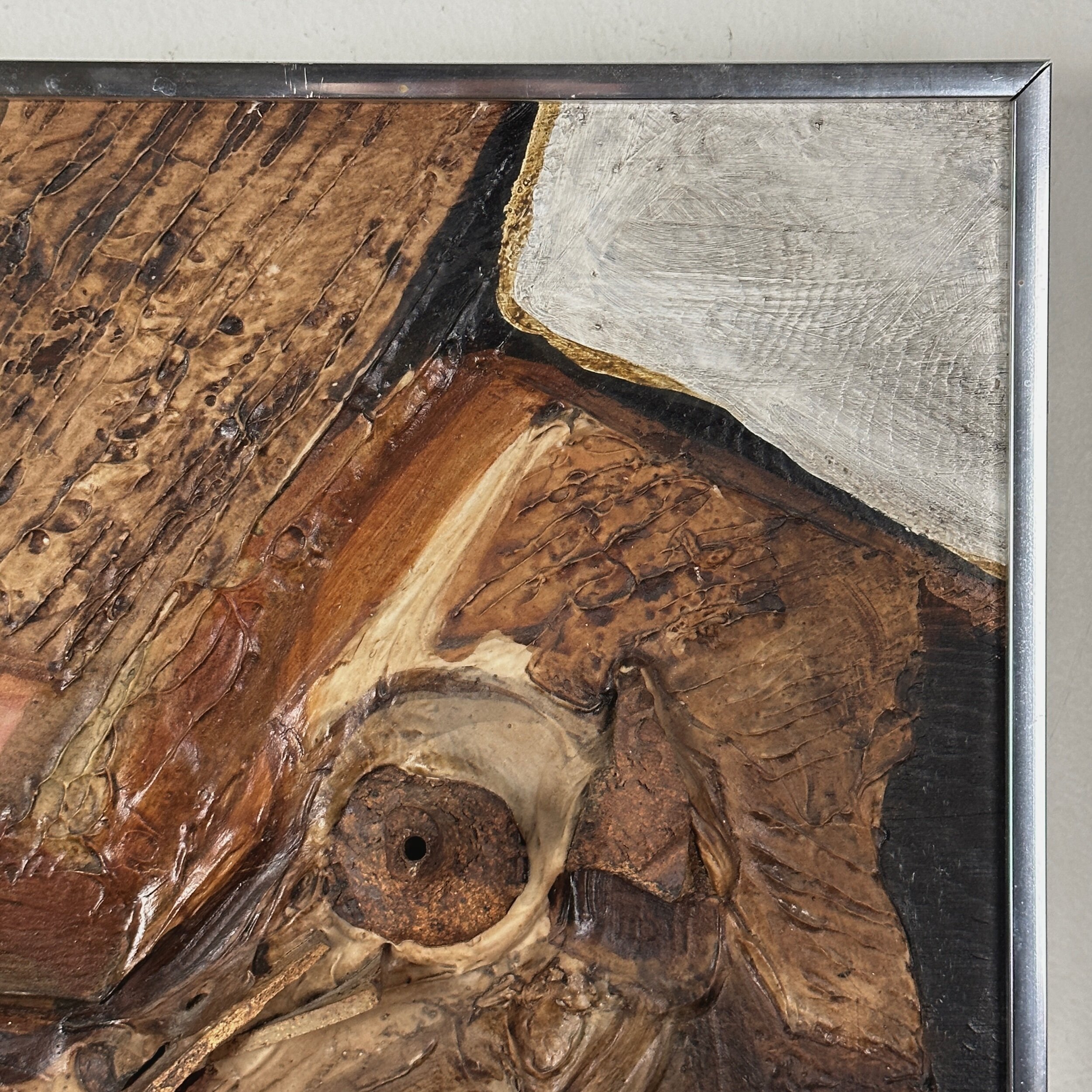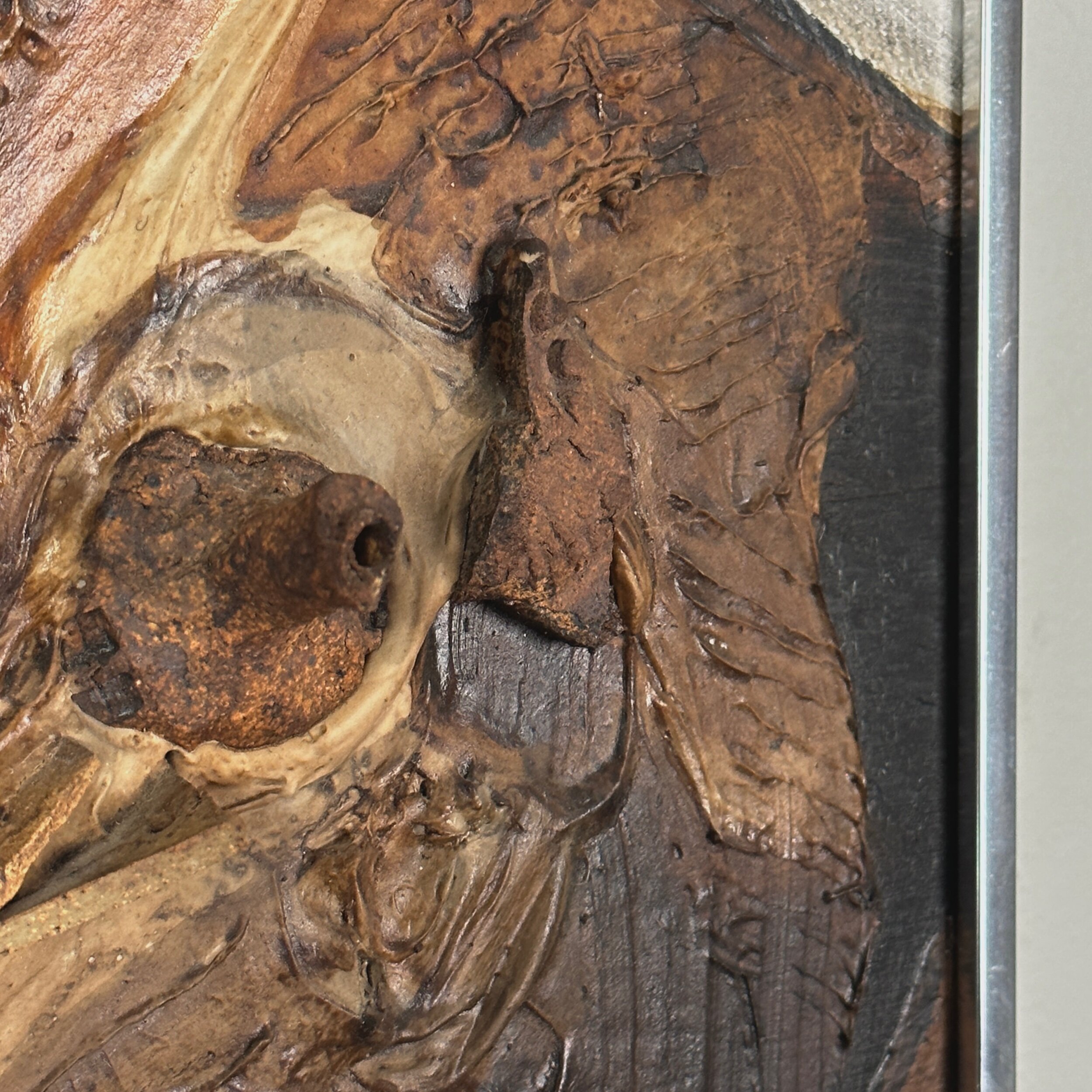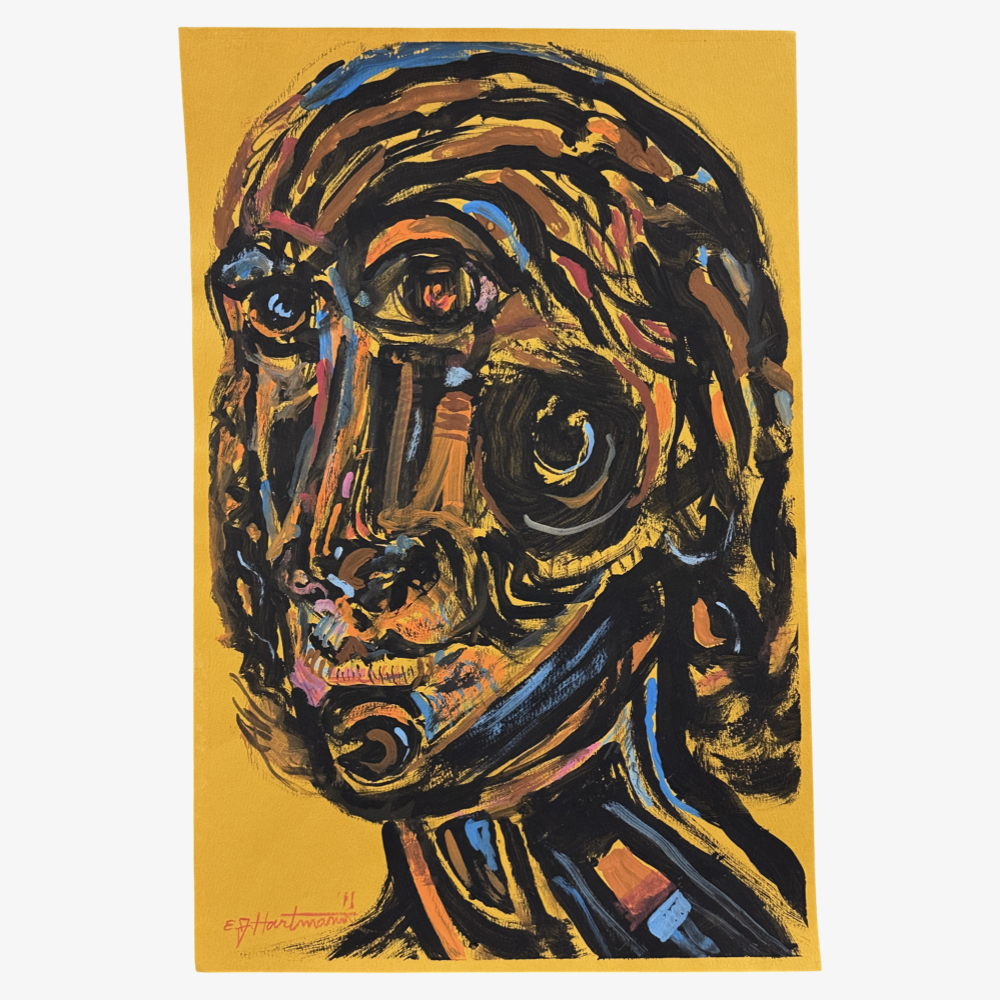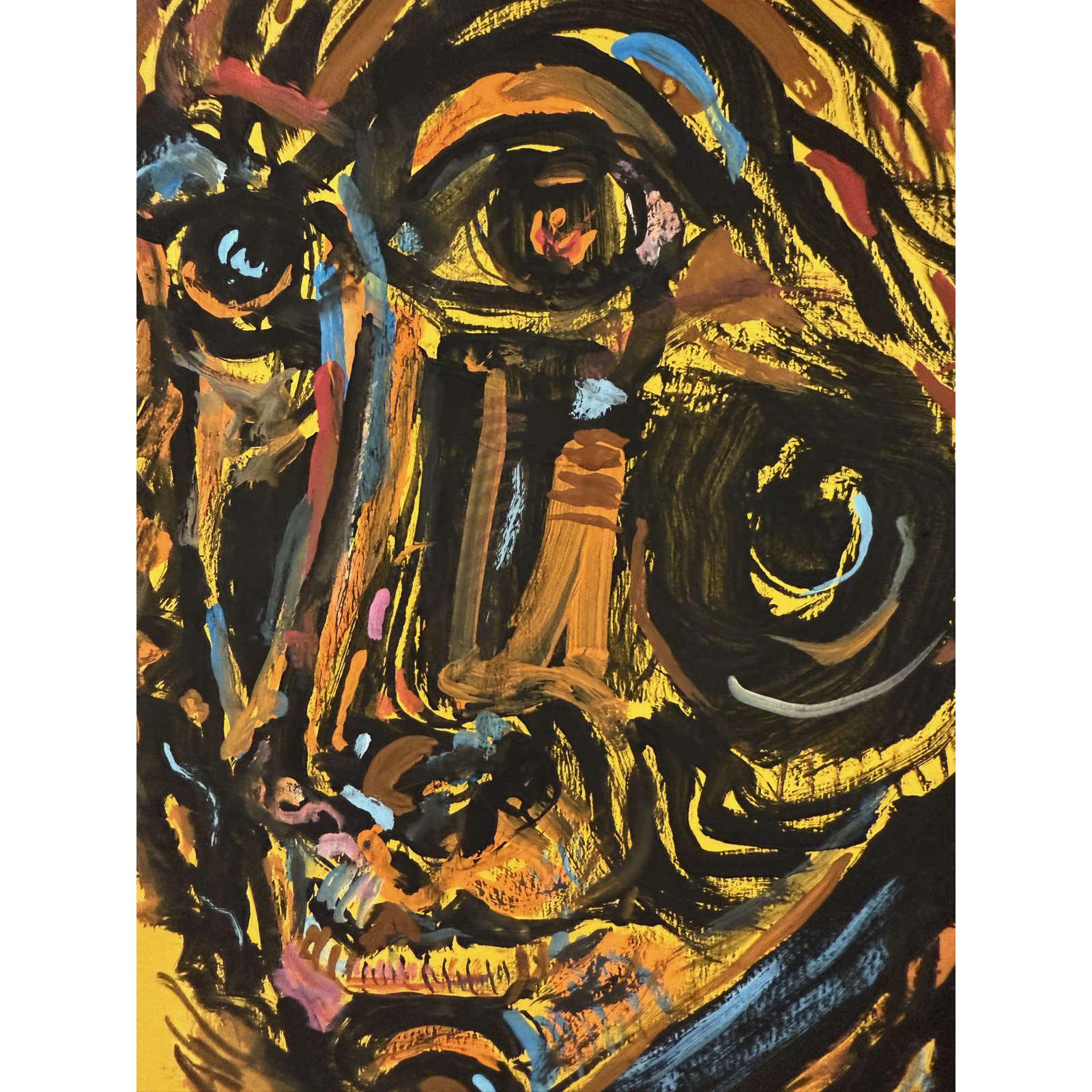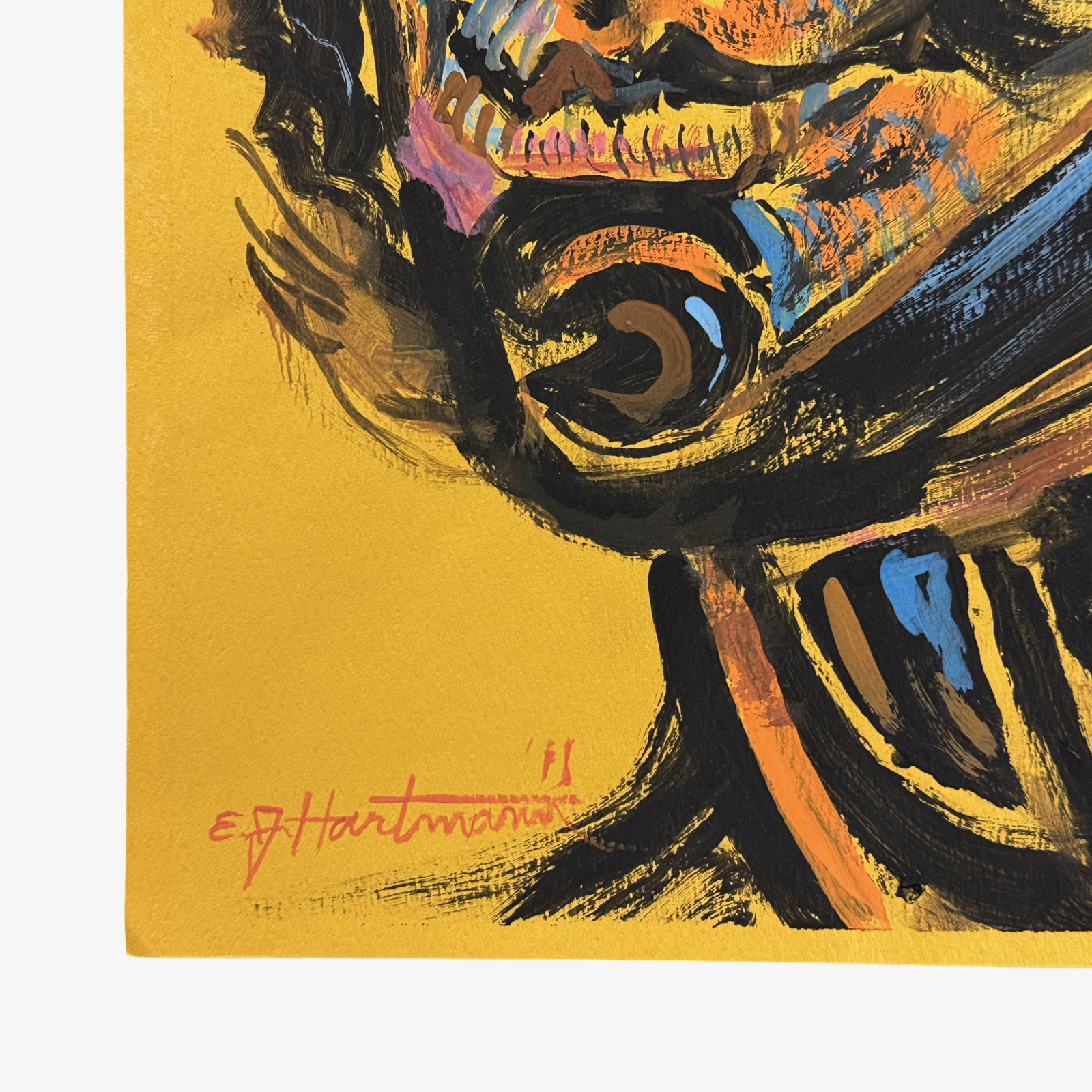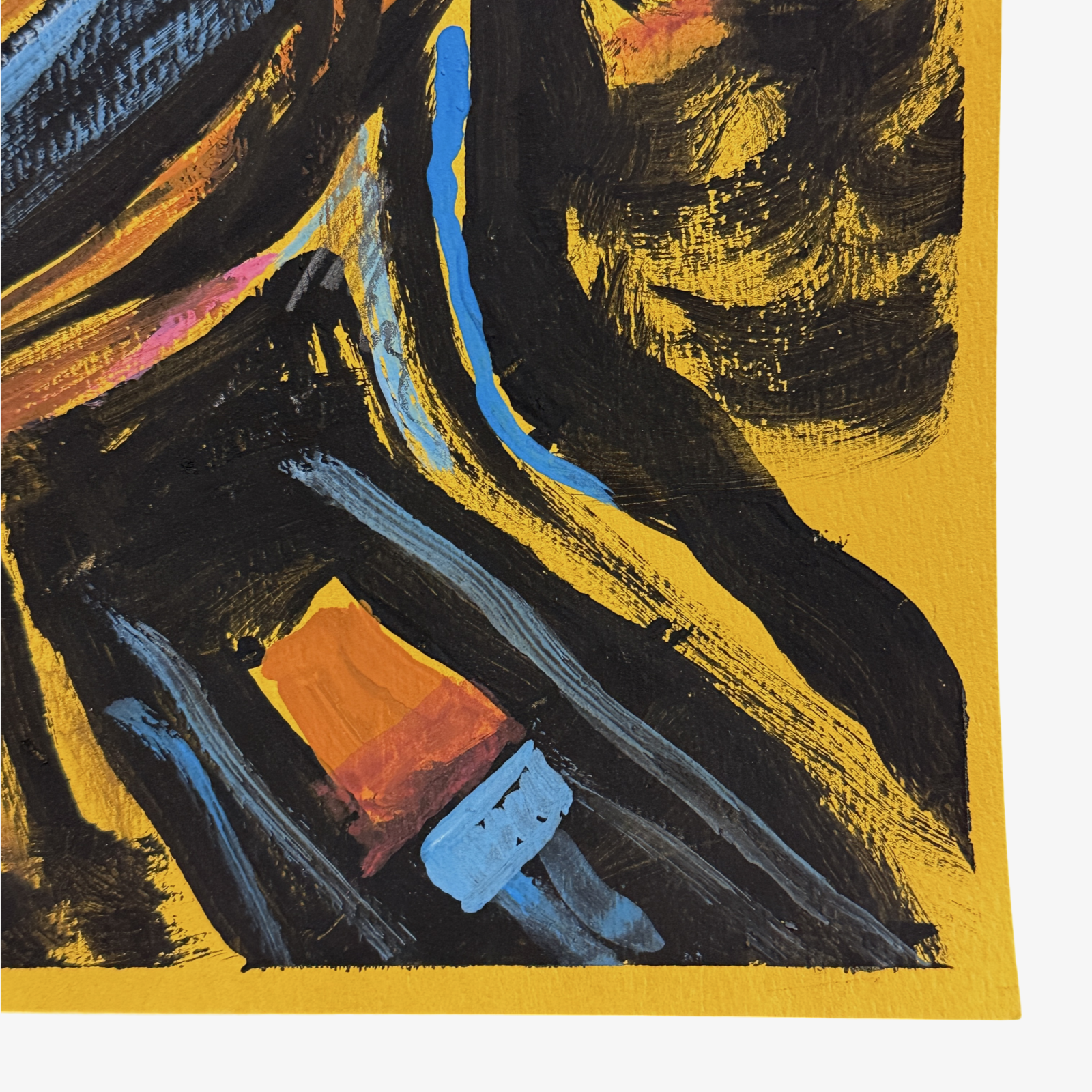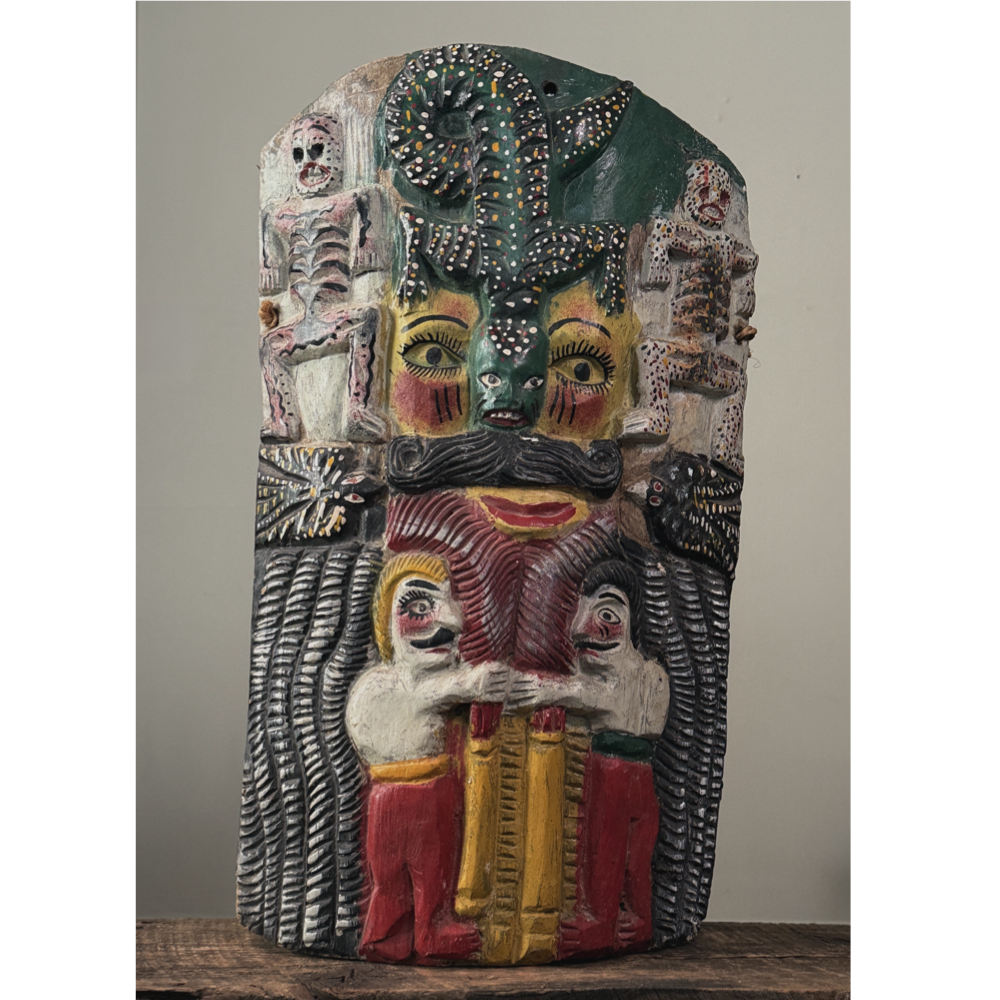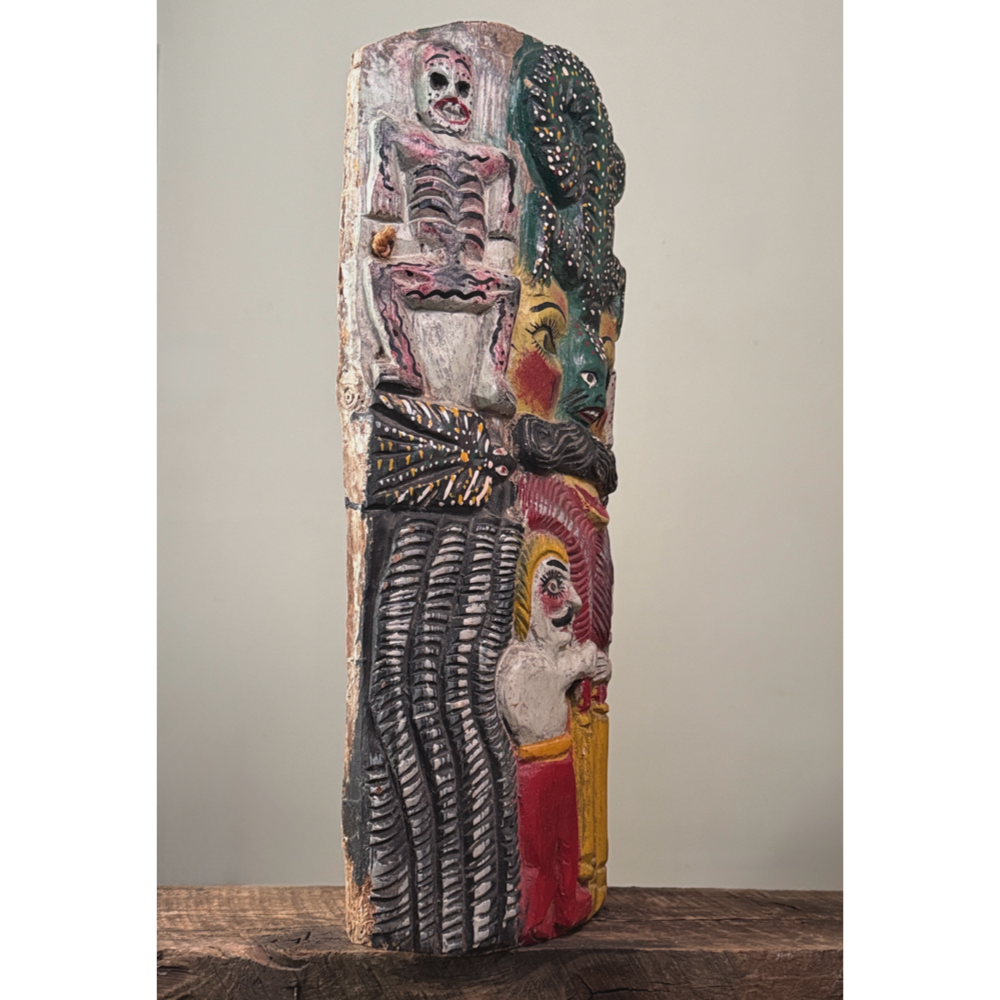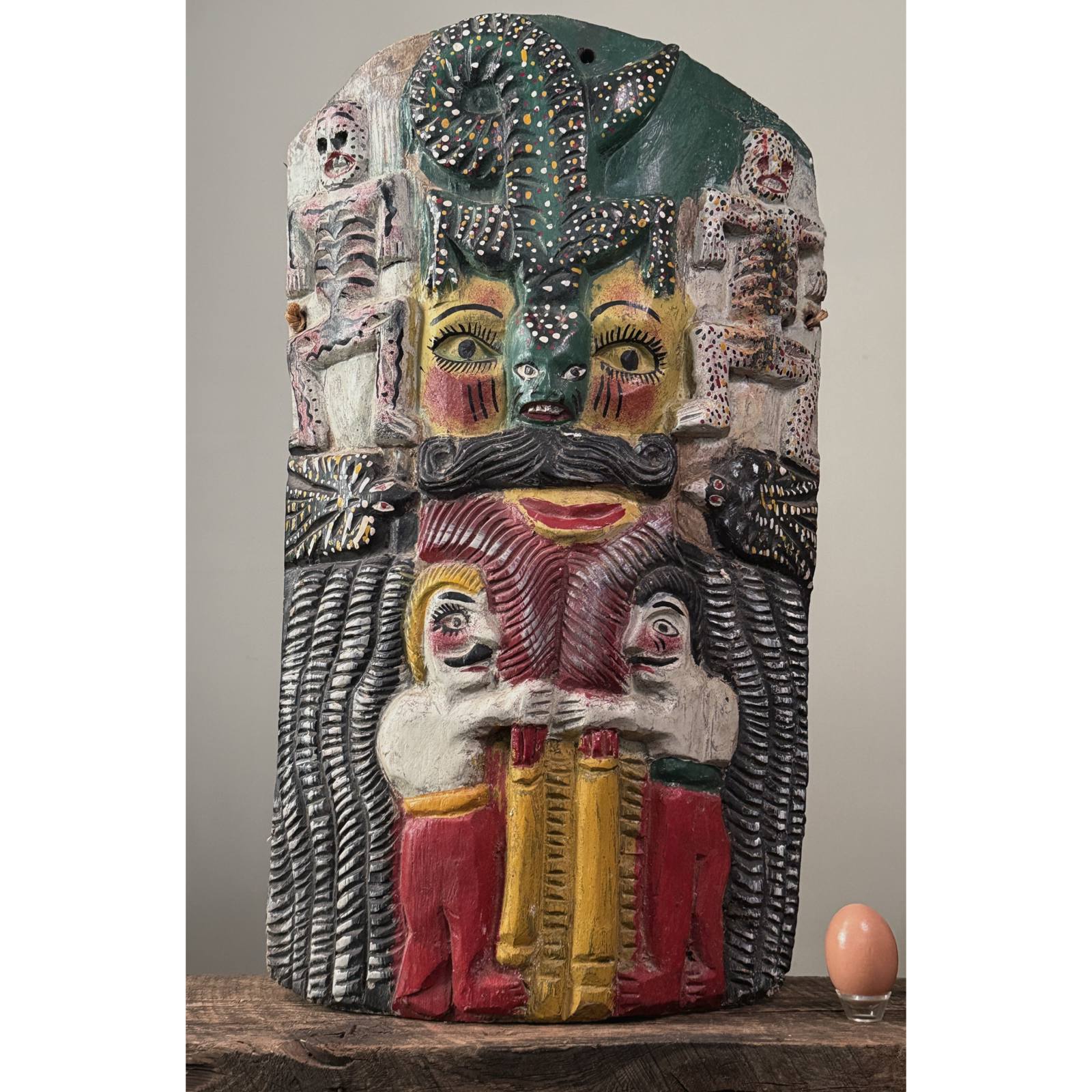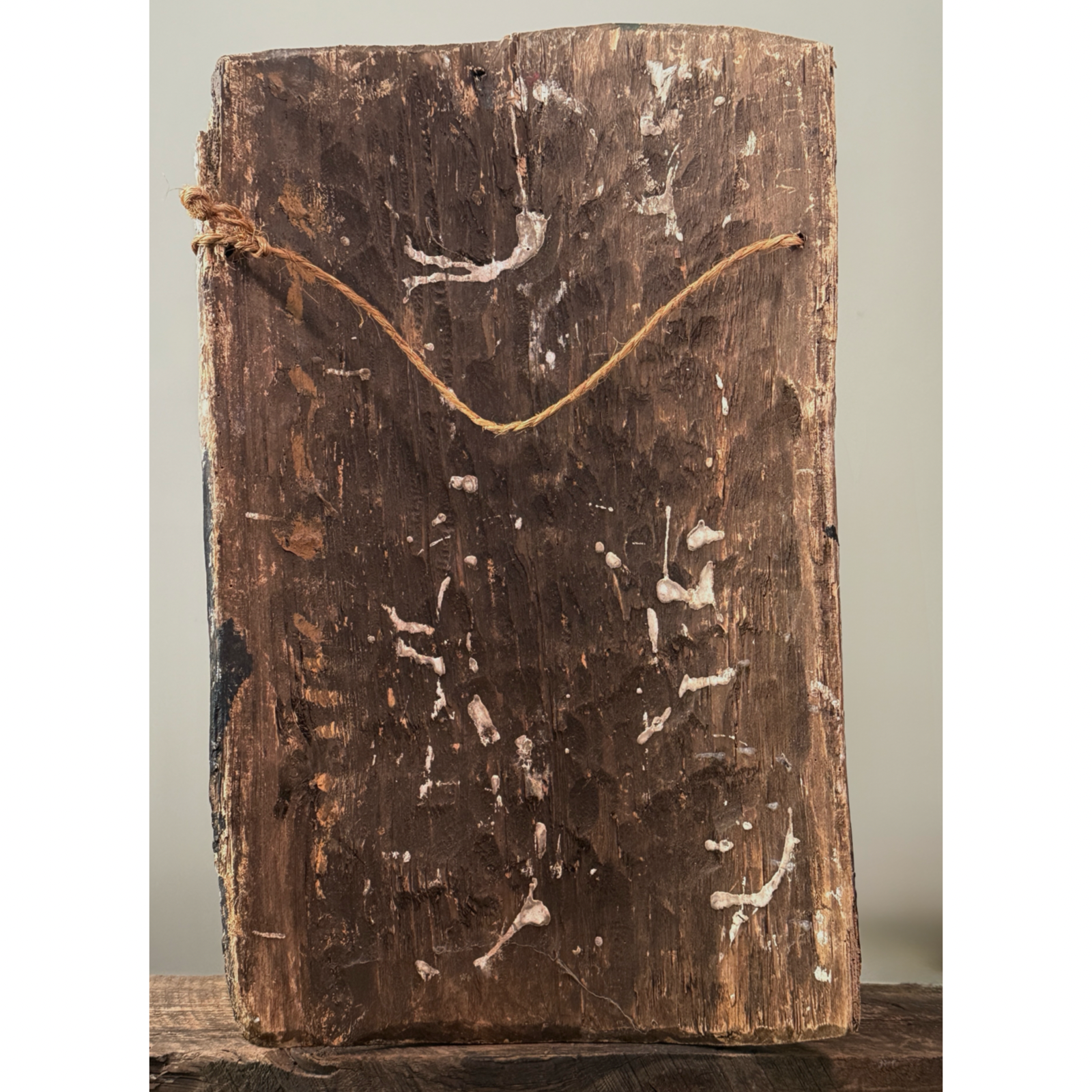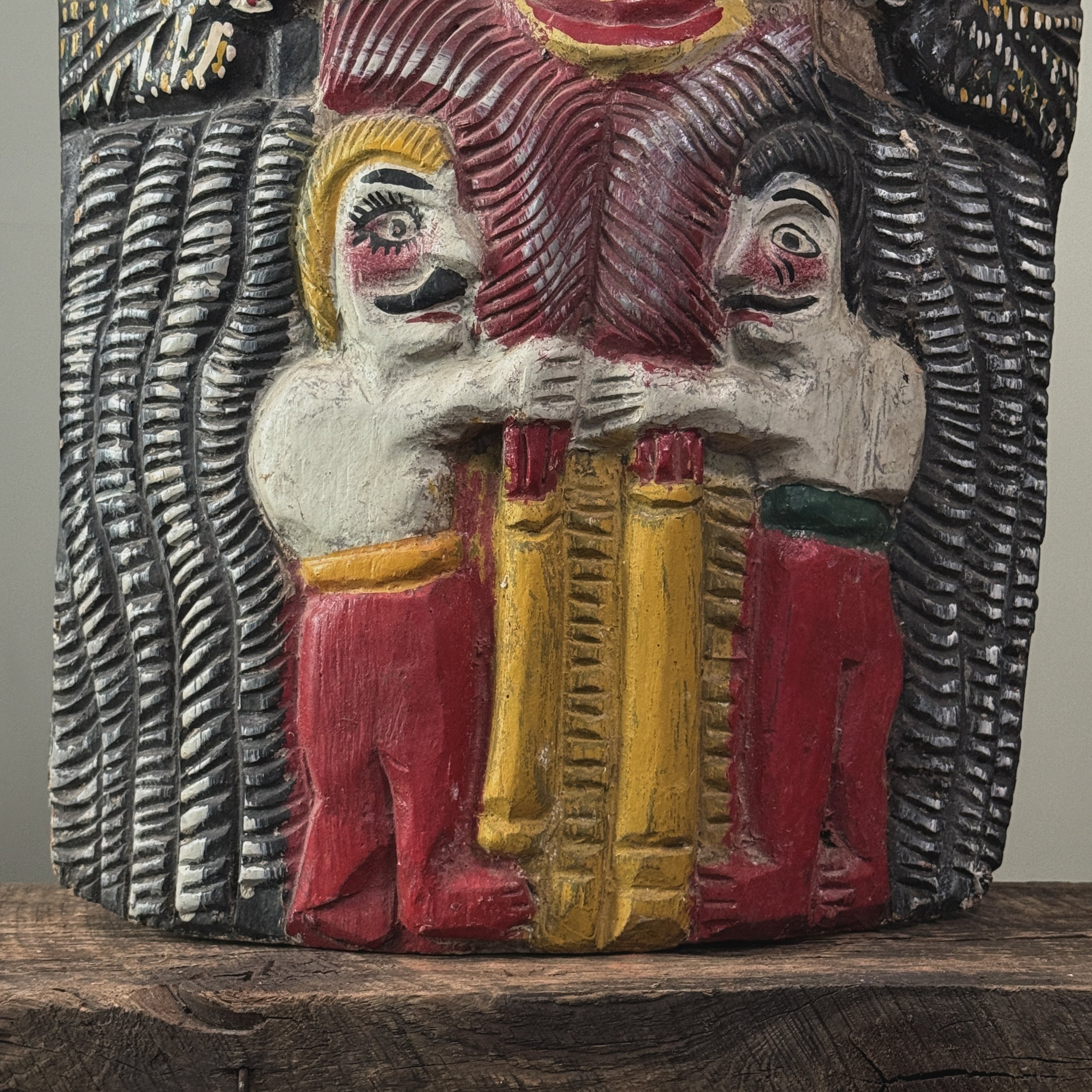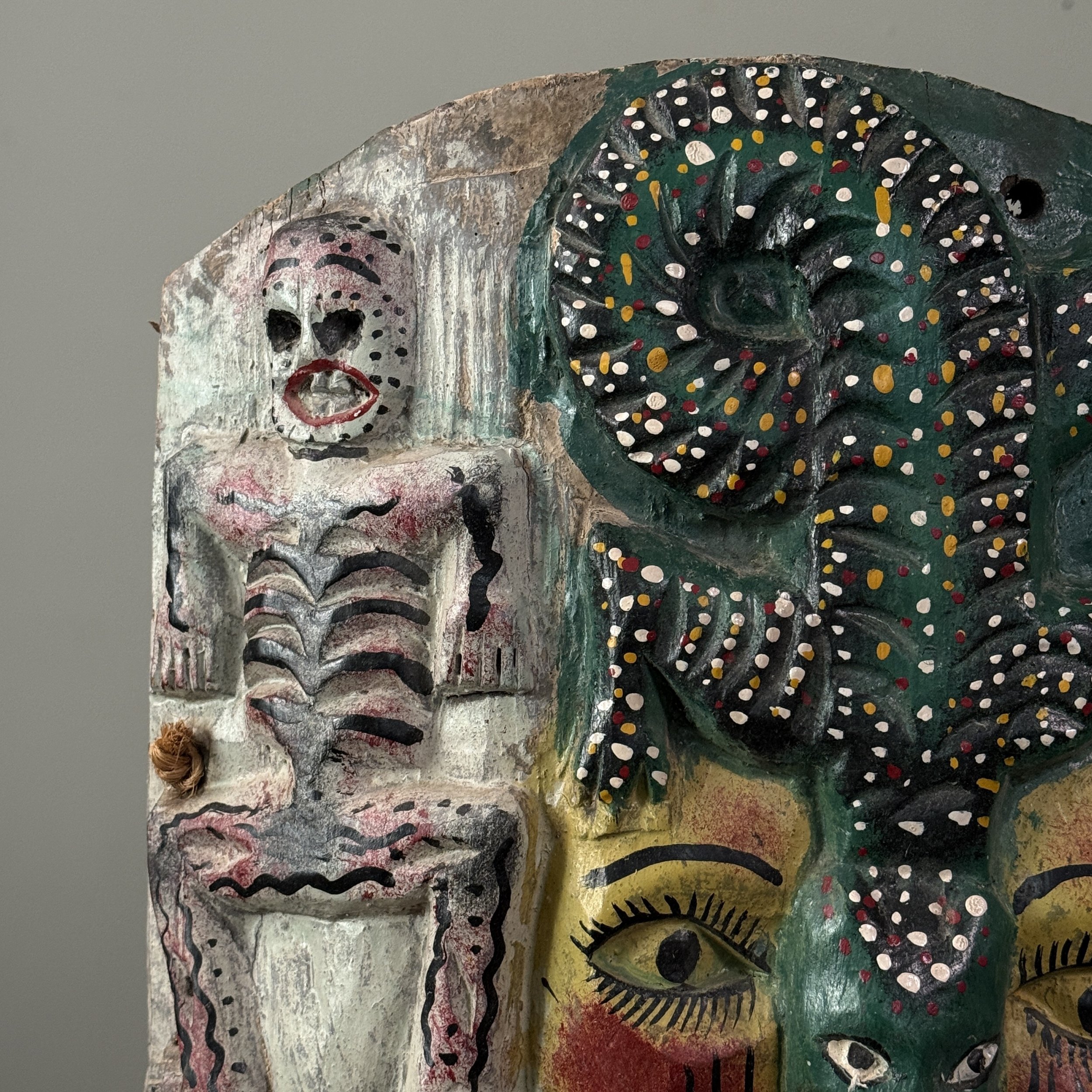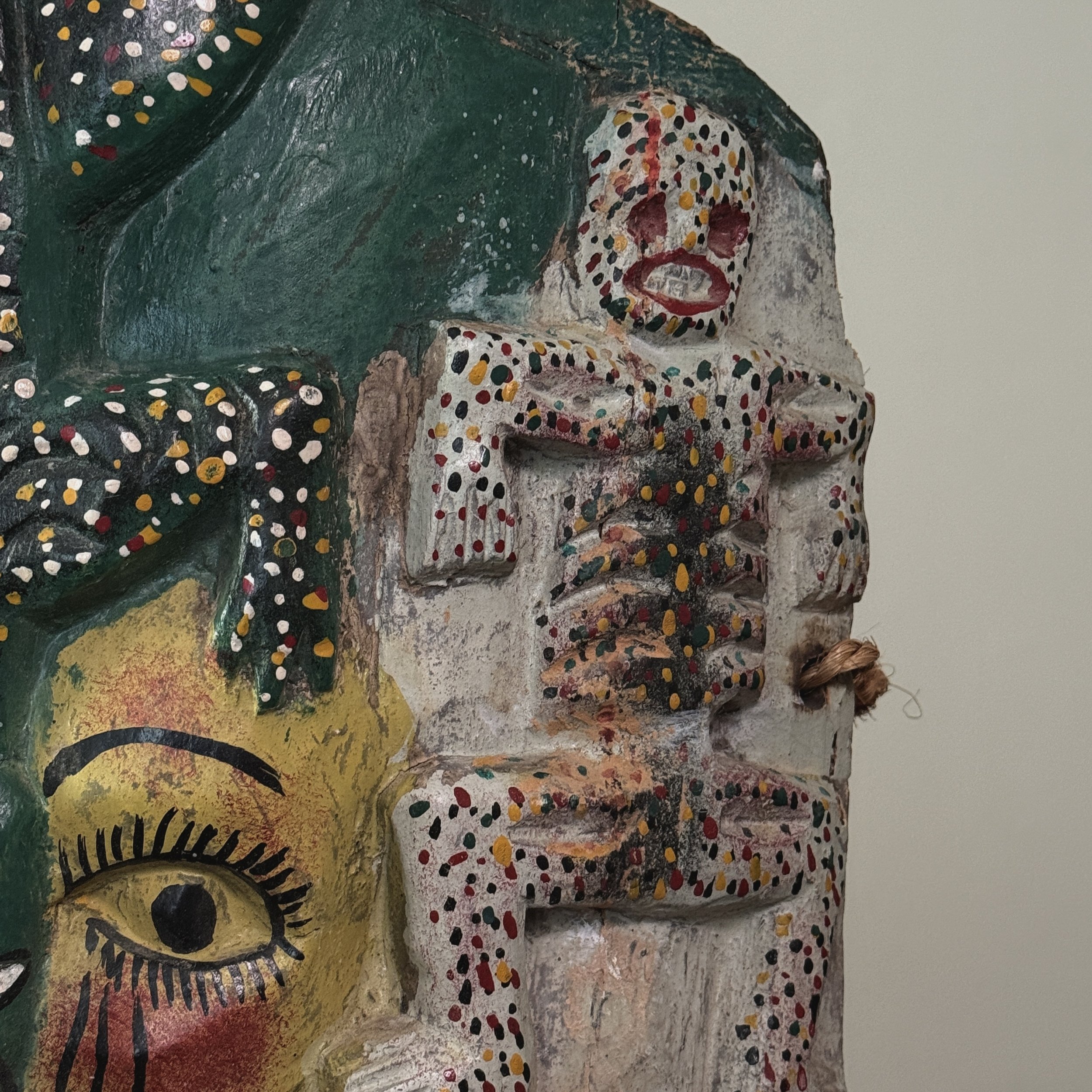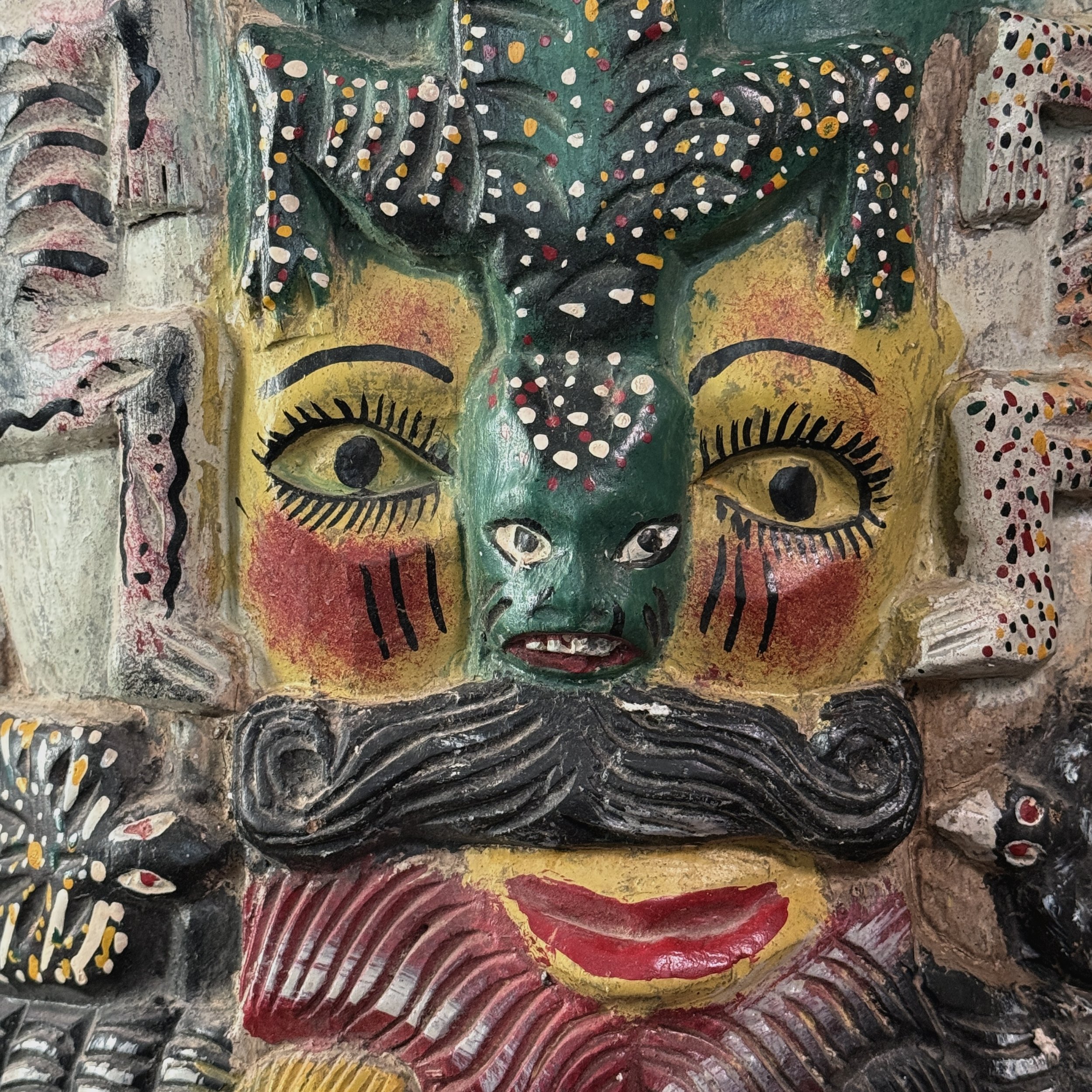 Image 1 of 5
Image 1 of 5

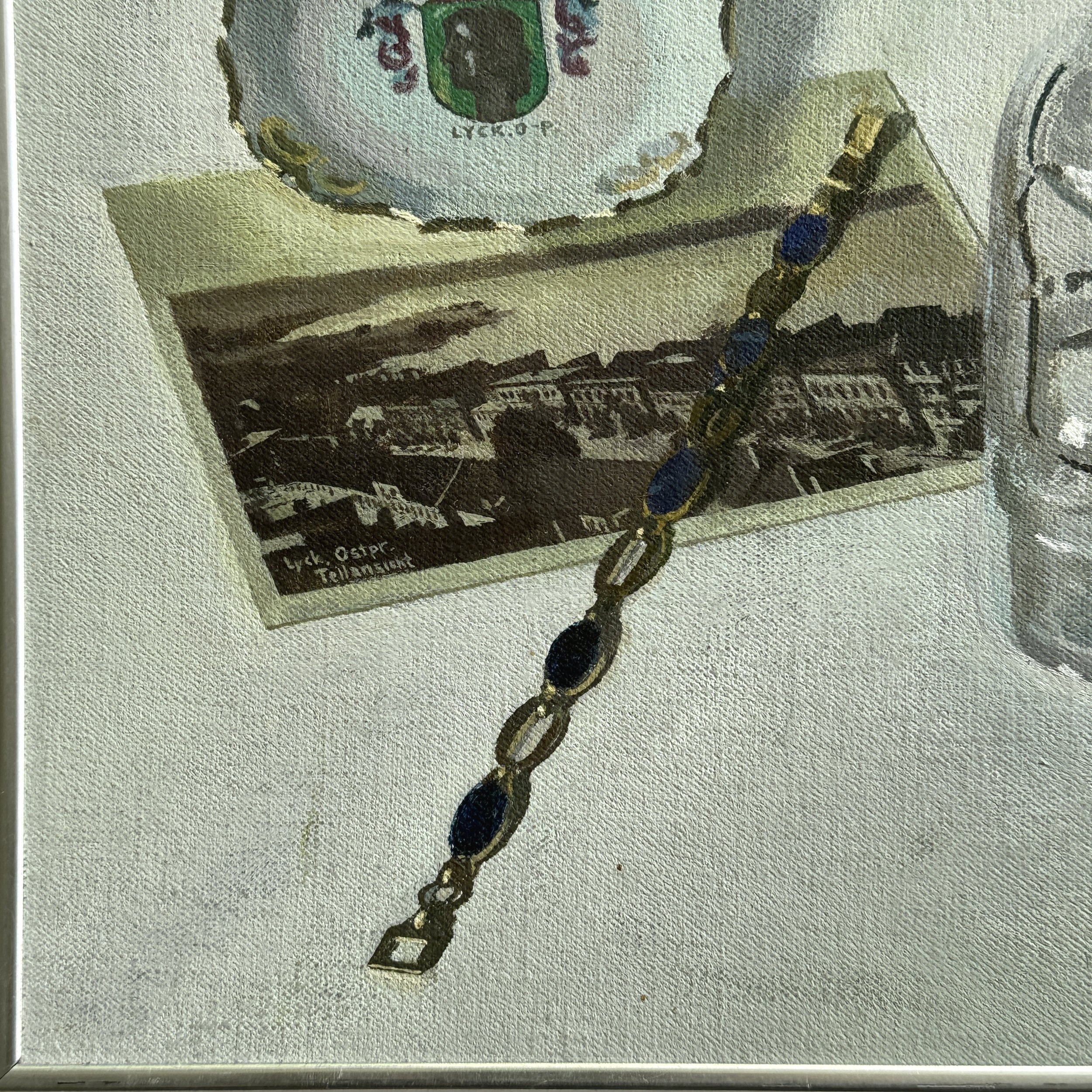 Image 2 of 5
Image 2 of 5

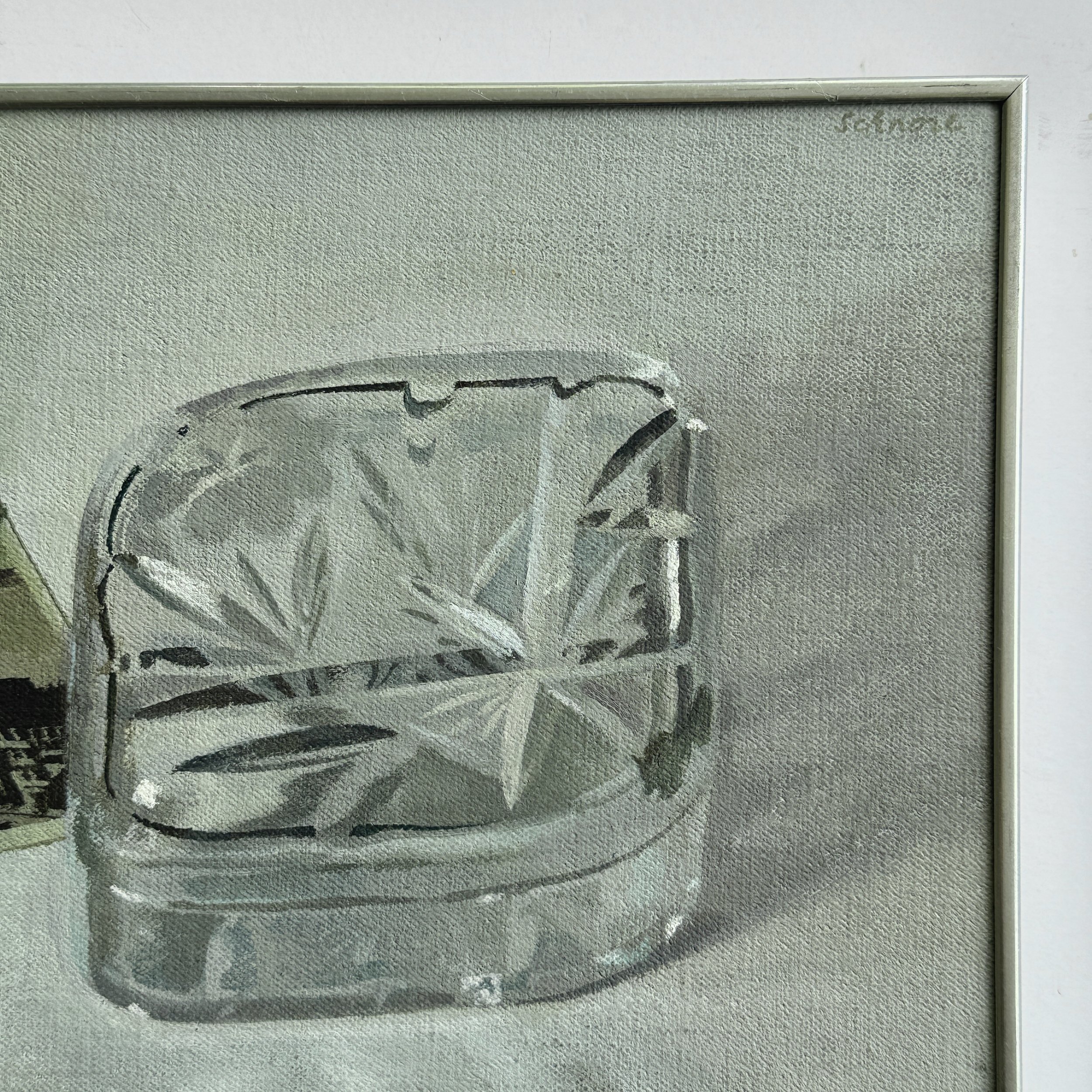 Image 3 of 5
Image 3 of 5

 Image 4 of 5
Image 4 of 5

 Image 5 of 5
Image 5 of 5






Vintage Realist Still Life with Glass Box, Lyck Postcard, and Gold Bracelet, Signed (Oil on Board)
Title: Still Life with Glass Box, Lyck Postcard, and Gold Bracelet
Medium: Oil on board
Dimensions: 9.25 × 13.25 in (23.5 × 33.7 cm)
Signature: Signed in the upper right corner
Date: Mid 20th Century
Frame: Housed in a period silver metal gallery frame
Description:
This meticulously rendered still life exemplifies the realist tradition, depicting an intimate arrangement of objects imbued with personal and historical significance. At its center lies a glass box, its transparency contrasting with the solidity of the accompanying items: a vintage postcard of Lyck (now Ełk, Poland), a gold bracelet adorned with blue gemstones, and a ceramic dish bearing the city’s heraldic symbol. The postcard, a relic of Ostpreussen (East Prussia), situates the composition within a specific geographic and cultural context—Lyck, once a prominent East Prussian town, was known for its picturesque lakes and 19th-century Neo-Gothic architecture, including the landmark Lyck Castle. The inclusion of these objects suggests themes of memory, displacement, and the material traces of vanished histories.
Provenance & Style:
The artist’s brushwork and attention to reflective surfaces—particularly the glass box and gilded bracelet—recall the influence of 17th-century Dutch vanitas painting, while the subdued palette and compositional restraint align with mid-20th-century realist tendencies.
Historical Context of Lyck:
Lyck (modern-day Ełk, Poland) was a cultural and administrative center in East Prussia, historically part of the German Empire until 1945. Situated amid the Masurian Lake District, the city was renowned for its natural beauty and architectural heritage, including the Johanneskirche (St. John’s Church) and a network of canals. Following World War II, Lyck was incorporated into Poland, and much of its German population was displaced—a transition that lends poignant subtext to the postcard’s inclusion in this still life.
Title: Still Life with Glass Box, Lyck Postcard, and Gold Bracelet
Medium: Oil on board
Dimensions: 9.25 × 13.25 in (23.5 × 33.7 cm)
Signature: Signed in the upper right corner
Date: Mid 20th Century
Frame: Housed in a period silver metal gallery frame
Description:
This meticulously rendered still life exemplifies the realist tradition, depicting an intimate arrangement of objects imbued with personal and historical significance. At its center lies a glass box, its transparency contrasting with the solidity of the accompanying items: a vintage postcard of Lyck (now Ełk, Poland), a gold bracelet adorned with blue gemstones, and a ceramic dish bearing the city’s heraldic symbol. The postcard, a relic of Ostpreussen (East Prussia), situates the composition within a specific geographic and cultural context—Lyck, once a prominent East Prussian town, was known for its picturesque lakes and 19th-century Neo-Gothic architecture, including the landmark Lyck Castle. The inclusion of these objects suggests themes of memory, displacement, and the material traces of vanished histories.
Provenance & Style:
The artist’s brushwork and attention to reflective surfaces—particularly the glass box and gilded bracelet—recall the influence of 17th-century Dutch vanitas painting, while the subdued palette and compositional restraint align with mid-20th-century realist tendencies.
Historical Context of Lyck:
Lyck (modern-day Ełk, Poland) was a cultural and administrative center in East Prussia, historically part of the German Empire until 1945. Situated amid the Masurian Lake District, the city was renowned for its natural beauty and architectural heritage, including the Johanneskirche (St. John’s Church) and a network of canals. Following World War II, Lyck was incorporated into Poland, and much of its German population was displaced—a transition that lends poignant subtext to the postcard’s inclusion in this still life.



